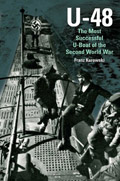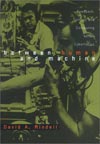PQ 17: A Story of a Ship
Winn, Godfrey
1947, Hutchinson & Co., London
| Type. | Personal, campaign and incident history |
| Pros. | Very early (first?) account of event from civil press perspective as well as eyewitness account |
| Cons. | Pervasive upper-class perspective |
| Rating. |  |
Winn’s 1946 story of WWII’s most infamous convoy is another excellent, classic account. Despite the public’s supposed tiredness with war and war subjects in the immediate post-war era, it sold very well: 190,000 copies in a year. This was largely due to its title and special subject, PQ-17. The story of PQ-17 has been told many times and need not be elaborated here. In 1946 there had been no official account of the convoy disaster, and no word of any kind other than scattered, poorly-formed, wartime press accounts, most of them American. The government gazette didn't publish any official information until a series on wartime operations in October 1947, by which time the controversy was well alight, more than five years on.
It has hardly abated since amongst the declining participants and a growing cognoscenti. Despite many books, and many explanations this story, with its many secret, confused and tragic elements, is a Banquo’s Ghost. Like the murder of JFK, this story won't go away. It combined bad luck, unimaginative and interfering senior officers ignoring limited evidence from intelligence specialists, and poor staff-work in draughting misleading signals. These signals appeared to indicate that both a surface attack would happen, and imminent, from their sequence and tone. Neither was true.
What strikes you immediately is the sense of authenticity. Despite never having read Broome’s Convoy Is To Scatter, which wasn't written until 1972, Winn from his own notes confirms the text and meaning of the signals which comprise Broome’s primary sources. These are not here presented as evidence in a book drawn from a court case. Here they are more horribly direct. They are waypoints on the road, punctuation marks in the unfolding disaster. Here too we can read the actual, pathetic, text of distress signals which Broome only refers to. Broome’s stress was largely over: Winn’s ordeal only begun.
Winn was a civilian newspaper columnist, given the chance to accompany an arctic convoy after first joining a converted merchant steamer turned "AA Cruiser", HMS Pozarica. As a writer he was unique: the only newspaperman permitted on the Kola Run, apparently until that point or, more pointedly, after. He was also unique in something he didn't refer to: he was the younger brother of Rodger Winn QC, a gifted Barrister with an injured back, who ran the STR, the Submarine Tracking Room, of the Operational Intelligence Centre of the Admiralty. He more than anyone was responsible for keeping tabs on enemy submarines. Surface vessels were the responsibility of another room, otherwise perhaps the mistake of scattering PQ-17 might never have occurred. He was widely known to have an almost ‘6th Sense’ where enemy intentions were concerned, drawn largely from extensive and continuous analysis and synthesis of U-Waffe signal traffic, intelligence, and debriefs of PoWs. He was also known, for the same reasons, to have an uncanny ability to interpret and predict Dönitz’s intentions. He was visited, on the evening in question, by the 1st Sea Lord and his staff, who also visited the main, Surface, tracking room.
The result of these visits and accompanying deliberations was the scattering, on the absence, rather than existence, of evidence that the German battleship Tirpitz, the heavy cruisers Scheer and Lützow and six fleet destroyers, had left their forward anchorage in Alta Fjord, N Norway, and were proceeding to attack PQ-17. Paymaster Commander Norman Denning RN in the OIC and Rodger Winn QC in the STR were both able to assure Adm Pound RN that there were no indications of German surface activity, other than the forward motions that had already occurred. The flotilla of KM heavy ships had been anchored at Alta for a month with a view to attacking the next arctic convoy. There were no indications, either in code traffic between KM commands and bases, nor more positively, in traffic to U-Waffe warning them of incipient KM surface movements, with orders not to track or shoot large vessels in certain areas.
Pound however, despite these negative indications in evidence, chose to base his decision upon the position and composition of the German force and the lack of recent air recce, which could neither indicate nor dispel their presence. The mere lack of air recce due to weather and breakdowns, did not mean the ships had moved out. It merely meant the RAF & RN had no idea whether they had moved or not. PQ-17 had made an effective voyage in the teeth of air and U-boat attack up to the point of its tragic scattering, the heavily-criticised withdrawal of escort warships, and the futile, individual, pathetic picking off of merchant ships, most of them American.
What we can discuss is Winn’s careful, note-supported account of the voyage before and after the scattering. He had an excellent position up on the bridge, out where he could see signals coming in, attacks on the convoy, the loss of ships, unlike most men in most ships in history. He was also an experienced writer, able to easily communicate his findings and feelings. He had amazingly easy, open, intimate relationships with captain and officers, the petty officers who adopted him most of all out of the ship’s company, access to engine room, bridge and gun positions.
Winn described in sometimes obscure but always sympathetic words the ship, converted from a small island steamer, her shellbacks and rough Hostilities Only seamen, the run to Iceland, the convoy conference, the arctic run, in blazing sunshine and blue water followed by welcome, concealing fog, the bizarre, bewildering scattering, the run to the ice, the nervous picking course south, the difficult waiting period in Novaya Zemlya amid the cold and isolation, which was still a long way from Archangel. The latter was the opposite end of the voyage from the comparative safety of the UK or even Iceland. Even once in Archangel, they faced an autumn and long winter sealed in the ice with diminishing rations, begging locals, unfriendly and suspicious Allies, frequent air attack on ships and docks, and a long, dangerous return voyage home.
Winn escaped this by being given a place in a USN cruiser which made the run to Murmansk with four RN destroyers to take out survivors and bring in ammunition for the return convoy, QP-13. He then reported to the Admiralty, where was officially told his story would be censored for the duration. This was over his strenuous objections. It was also despite the obvious benefits in publishing an official RN version, to counteract both German propaganda and negative British and US press reports, the main reason for the continuing controversy. Already fights were erupting in bars and streets in the UK, the Med and North America, wherever sailors, merchant seamen and civilians were discussing the events, and their interpretation. The fights only ebbed away in later years once the participants and observers were too old, and there were enough accounts of Admiralty errors, bad luck, and general trauma, to dispel most of the beliefs.
Winn then reported for duty at HMS Ganges, the basic training facility for HO recruits. He had already decided to join the RN as an ordinary seaman, not an officer candidate, deciding to do "his bit" for the war effort there, rather than where he might have been more use.
The work is well illustrated with a theatre map and period photographs, many his own, which give the book a personal, immediate feel unlike many later works which used stock images of vessels and personnel. Many of the men in his photographs were to die months later when HMS Pozarica was torpedoed, partially repaired and then scuttled during the Torch landings in N Africa. The cover art is a colour painting, a painting-over of a photograph depicting a destroyer under air attack, viewed from the bridge aft at the A/A guns. Painting over a photo was a normal practice for dramatic and promotional purposes for many years. A gritty, grainy realistic photo could be easily adapted into a catchy cover for such a popular work. As with his earlier work, Home from Sea, which discusses his training and initial voyages after PQ-17, the work is very much a wartime text, both in its sensitivity to class and its focus on ordinary seamen and petty officers. Winn gave a sympathetic depiction of a class-bound nation desperately at war, very much in the spirit of the time. He also gave a very personal view of the war. It was the last in a series which commenced with very typical propaganda pieces about aircraft, ships, men, and service. It ended, as war experience should, with disappointment, disillusion, a changed perspective, and a charged, enhanced desire to both document the struggle and the human dimensions of those who served.
The reviewer welcomes your comments on this review.
Review written by Ian Campbell, Launceston, Tasmania.
Published on 13 Jan 2001.
Return to our main review page.



